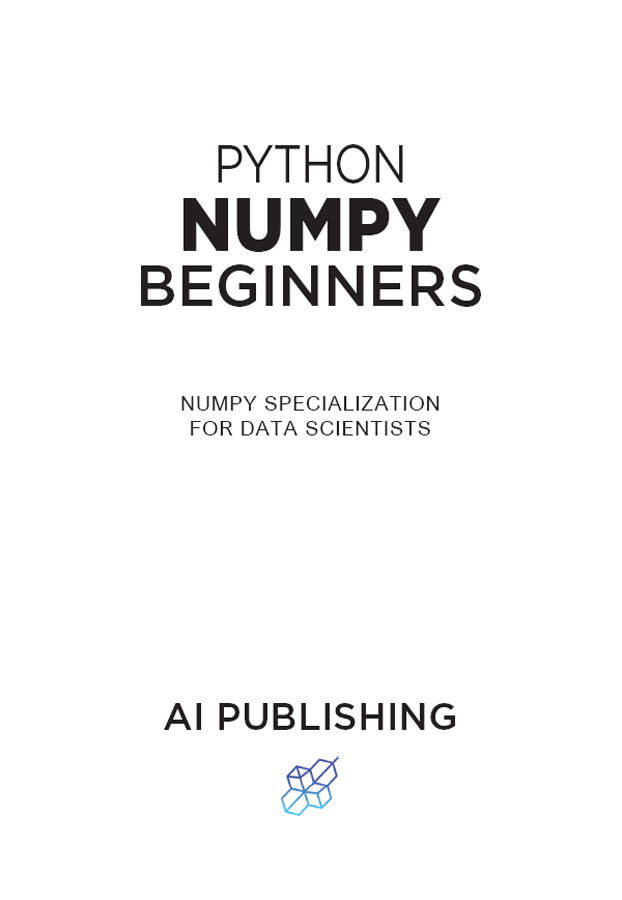 Copyright 2021 by AI Publishing All rights reserved. First Printing, 2021 Edited by AI Publishing eBook Converted and Cover by AI Publishing Studio Published by AI Publishing LLC ISBN-13: 978-1-956591-09-5 The contents of this book may not be copied, reproduced, duplicated, or transmitted without the direct written permission of the author. Under no circumstances whatsoever will any legal liability or blame be held against the publisher for any compensation, damages, or monetary loss due to the information contained herein, either directly or indirectly. Legal Notice: You are not permitted to amend, use, distribute, sell, quote, or paraphrase any part of the content within this book without the specific consent of the author. Disclaimer Notice: Kindly note that the information contained within this document is solely for educational and entertainment purposes. No warranties of any kind are indicated or expressed.
Copyright 2021 by AI Publishing All rights reserved. First Printing, 2021 Edited by AI Publishing eBook Converted and Cover by AI Publishing Studio Published by AI Publishing LLC ISBN-13: 978-1-956591-09-5 The contents of this book may not be copied, reproduced, duplicated, or transmitted without the direct written permission of the author. Under no circumstances whatsoever will any legal liability or blame be held against the publisher for any compensation, damages, or monetary loss due to the information contained herein, either directly or indirectly. Legal Notice: You are not permitted to amend, use, distribute, sell, quote, or paraphrase any part of the content within this book without the specific consent of the author. Disclaimer Notice: Kindly note that the information contained within this document is solely for educational and entertainment purposes. No warranties of any kind are indicated or expressed.
Readers accept that the author is not providing any legal, professional, financial, or medical advice. Kindly consult a licensed professional before trying out any techniques explained in this book. By reading this document, the reader consents that under no circumstances is the author liable for any losses, direct or indirect, that are incurred as a consequence of the use of the information contained within this document, including, but not restricted to, errors, omissions, or inaccuracies. How to Contact Us If you have any feedback, please let us know by emailing . Your feedback is immensely valued, and we look forward to hearing from you. It will be beneficial for us to improve the quality of our books.
To get the Python codes and materials used in this book, please click the link below: www.aipublishing.io/book-Numpy-python The order number is required. About the Publisher At AI Publishing Company, we have established an international learning platform specifically for young students, beginners, small enterprises, startups, and managers who are new to data science and artificial intelligence. Through our interactive, coherent, and practical books and courses, we help beginners learn skills that are crucial to developing AI and data science projects. Our courses and books range from basic introduction courses to language programming and data science to advanced courses for machine learning, deep learning, computer vision, big data, and much more, using programming languages like Python, R, and some data science and AI software. AI Publishings core focus is to enable our learners to create and try proactive solutions for digital problems by leveraging the power of AI and data science to the maximum extent. Moreover, we offer specialized assistance in the form of our free online content and eBooks, providing up-to-date and useful insight into AI practices and data science subjects, along with eliminating the doubts and misconceptions about AI and programming.
Our experts have cautiously developed our online courses and kept them concise, short, and comprehensive so that you can understand everything clearly and effectively and start practicing the applications right away. We also offer consultancy and corporate training in AI and data science for enterprises so that their staff can navigate through the workflow efficiently. With AI Publishing, you can always stay closer to the innovative world of AI and data science. If you are eager to learn the A to Z of AI and data science but have no clue where to start, AI Publishing is the finest place to go. Please contact us by email at . AI Publishing Is Searching for Authors Like You Interested in becoming an author for AI Publishing? Please contact us at .
We are working with developers and AI tech professionals just like you to help them share their insights with global AI and Data Science lovers. You can share all your knowledge about hot topics in AI and Data Science. Table of ContentsPreface With the rise of data science and high-performance computing hardware, programming languages have evolved as well. Various libraries in different programming languages have been developed that provide a layer of abstraction over complex data science tasks. Python programming language has taken the lead in this regard. More than 50 percent of all data science-related projects are being developed using Python programming.
If you ask a data science expert what the two most common and widely used Python libraries for data science are, the answer would almost invariably be the NumPy library and the Pandas library. And this is what the focus of this book is. It introduces you to the NumPy and Pandas libraries with the help of different use cases and examples. Thank you for your decision to purchase this book. I can assure you that you will not regret your decision.
Book Approach
The book follows a very simple approach.
The 1st chapter is introductory and provides information about setting up the installation environment. The 1st chapter also contains a brief crash course on Python, which you can skip if you are already familiar with Python. The rest of the book contain five chapters. Chapter 2 provides a brief introduction to the NumPy array. You will study how to create NumPy arrays and add, remove, and print items in NumPy arrays. Chapter 3 focuses on NumPy arrays manipulation concepts such as sorting, reshaping, and indexing.
Chapter 4 provides miscellaneous tips and tricks for the NumPy library. The 5th chapter explains how you can perform mathematical operations with NumPy, while the 6th chapter explains the process of creating an artificial neural network with NumPy from scratch. Each chapter explains the concepts theoretically, followed by practical examples. Each chapter also contains exercises that students can use to evaluate their understanding of the concepts explained in the chapter. The Python notebook for each chapter is provided in the Codes Folder that accompanies this book. It is advised that instead of copying the code from the book, you write the code yourself, and in case of an error, you match your code with the corresponding Python notebook, find and then correct the error.
The datasets used in this book are either downloaded at runtime or are available in the Resources folder. Do not copy and paste the code from the PDF notebook or Kindle version, as you might face an indentation issue. However, if you have to copy some code, copy it from the Python Notebooks.
Who Is This Book For?
The book is aimed ideally at absolute beginners to data science in specific and Python programming in general. If you are a beginner-level data scientist, you can use this book as a first introduction to NumPy. If you are already familiar with Python and data science, you can also use this book for general reference to perform common tasks with NumPy.
Since this book is aimed at absolute beginners, the only prerequisites to efficiently use this book are access to a computer with the internet and basic knowledge of programming. All the codes and datasets have been provided. However, you will need the internet to download the data preparation libraries.
How to Use This Book?
In each chapter, try to understand the usage of a specific concept first and then execute the example code. I would again stress that rather than copying and pasting code, try to write codes yourself. Then, in case of any error, you can match your code with the source code provided in the book as well as in the Python Notebooks in the
Resources folder.
Finally, answer the questions asked in the exercises at the end of each chapter. The solutions to the exercises have been given at the end of the book. To facilitate the reading process, occasionally, the book presents three types of box-tags in different colors: Requirements, Further Readings, and Hands-on Time. Examples of these boxes are shown below.
Next page

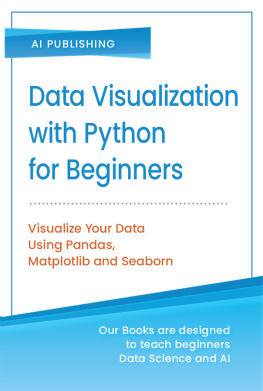
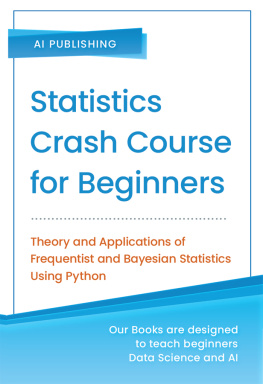
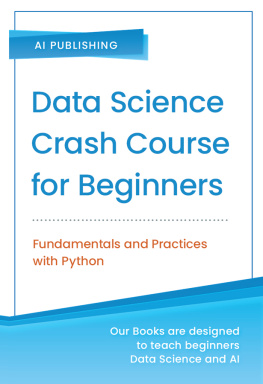
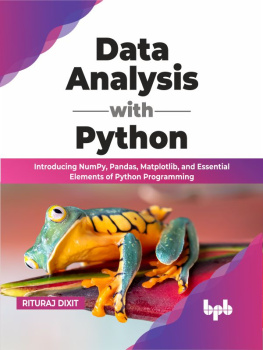
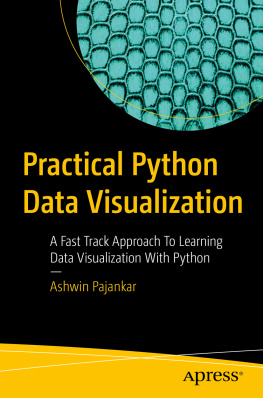
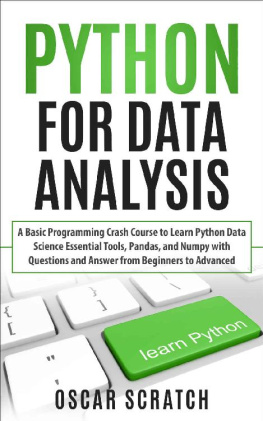
![Curtis Miller [Curtis Miller] - Hands-On Data Analysis with NumPy and pandas](/uploads/posts/book/119333/thumbs/curtis-miller-curtis-miller-hands-on-data.jpg)
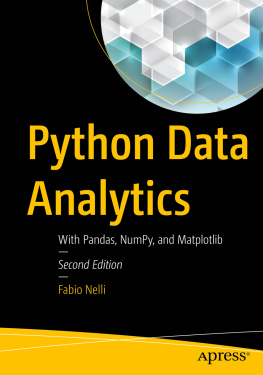
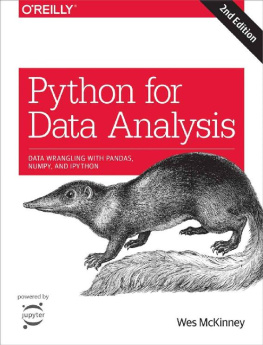
 Copyright 2021 by AI Publishing All rights reserved. First Printing, 2021 Edited by AI Publishing eBook Converted and Cover by AI Publishing Studio Published by AI Publishing LLC ISBN-13: 978-1-956591-09-5 The contents of this book may not be copied, reproduced, duplicated, or transmitted without the direct written permission of the author. Under no circumstances whatsoever will any legal liability or blame be held against the publisher for any compensation, damages, or monetary loss due to the information contained herein, either directly or indirectly. Legal Notice: You are not permitted to amend, use, distribute, sell, quote, or paraphrase any part of the content within this book without the specific consent of the author. Disclaimer Notice: Kindly note that the information contained within this document is solely for educational and entertainment purposes. No warranties of any kind are indicated or expressed.
Copyright 2021 by AI Publishing All rights reserved. First Printing, 2021 Edited by AI Publishing eBook Converted and Cover by AI Publishing Studio Published by AI Publishing LLC ISBN-13: 978-1-956591-09-5 The contents of this book may not be copied, reproduced, duplicated, or transmitted without the direct written permission of the author. Under no circumstances whatsoever will any legal liability or blame be held against the publisher for any compensation, damages, or monetary loss due to the information contained herein, either directly or indirectly. Legal Notice: You are not permitted to amend, use, distribute, sell, quote, or paraphrase any part of the content within this book without the specific consent of the author. Disclaimer Notice: Kindly note that the information contained within this document is solely for educational and entertainment purposes. No warranties of any kind are indicated or expressed.